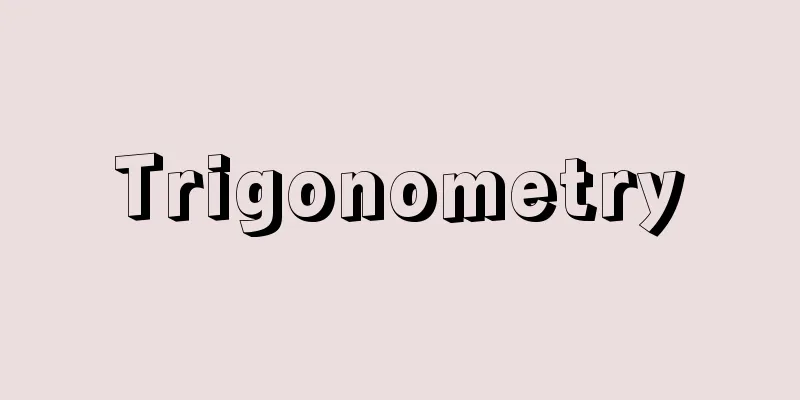Spinocerebellar Degeneration

|
◎ Ataxia progresses gradually [What kind of disease is it?] This is a disease in which degeneration occurs in the cerebellum, brain stem, and spinal cord, causing ataxia that makes the limbs (hands and feet) and trunk (torso) move awkwardly, and it progresses gradually. There are various types of the disease, as listed below. Broadly speaking, there are two types: hereditary and non-hereditary. With advances in molecular genetics, the existence of causative genes for hereditary diseases is being revealed one after another, and the relationship between the location of the causative genes and the symptoms of the disease is becoming clearer. [Symptoms] Ataxia first begins with gait ataxia (unsteady walking as if drunk), followed by gradually appearing symptoms such as difficulty with manual work, slow speech, and slurred speech. Depending on the type of disease, additional symptoms such as Parkinson's symptoms (muscle stiffness, tremors, slouching posture, etc.) and autonomic nervous system symptoms (urinary problems, impotence, orthostatic hypotension, etc.) may occur. The disease progresses slowly and may take 10 to 20 years to develop, but it is rarely life-threatening. ■ Olive-pontine-cerebellar atrophy It is non-hereditary and begins in middle age with difficulty walking, progressing to upper limb (arm) and speech dysfunction, and eventually Parkinson's symptoms and autonomic nervous system symptoms are frequently added. This is the most common type of spinocerebellar degeneration in Japan. ■Menzel ataxia It is hereditary and the symptoms are the same as those of olivo-ponto-cerebellar atrophy (mentioned above). This type occurs between young and middle age. ■ Late cerebellar cortical atrophy It is non-hereditary, and the main symptom is cerebellar ataxia, with no Parkinson's symptoms or autonomic nervous system symptoms. It develops after middle age. It is necessary to differentiate this condition from cerebellar ataxia caused by alcohol poisoning, antiepileptic drug poisoning, and malignant tumors. ■ Holmes type ataxia It is hereditary, and the symptoms are the same as those of late cerebellar cortical atrophy (mentioned above), but onset occurs slightly later in life. ■Joseph's disease is hereditary and, in addition to cerebellar ataxia, a diverse combination of symptoms is seen, including increased deep reflexes (an increase in the physiological phenomenon in which a muscle contracts reflexly when the tendon is struck with a hammer to stretch it), Babinski sign (a pathological phenomenon in which the big toe curls back when the outside of the sole of the foot is rubbed against the toes), nystagmus (involuntary back and forth movement of the eyes), ptosis, eye movement disorders, Parkinson's symptoms, and peripheral neuropathy. This is a relatively common type of hereditary spinocerebellar degeneration, occurring in young to middle-aged people. ■ Friedreich's ataxia It is hereditary and is a representative spinal cord type of spinocerebellar degeneration, with lesions in the posterior columns of the spinal cord and the spinocerebellar tracts. It is often seen in boys around 10 years old, and begins with ataxia, but is characterized by worsening unsteadiness when the eyes are closed (Romberg's sign). This is followed by awkwardness in hand and mouth movements, loss of deep reflexes in the lower limbs (legs), and muscle weakness and atrophy in the peripheral limbs (the ends of the hands and feet). Other conditions include a foot abnormality called Friedreich's foot (pes cavus, a condition in which the curve of the arch of the foot is higher than normal), kyphosis of the spine, and heart disease. ■ Hereditary spastic paralysis is a hereditary disease in which degeneration occurs in the pyramidal tract (lateral column) of the spinal cord. It occurs in young people. Muscle tension in both lower limbs (legs) increases, and symptoms include a stiff gait (spastic gait), increased deep reflexes, and Babinski sign (see Joseph's disease above). In the 40s and 50s, the patient becomes unable to walk due to spastic gait and equinus (a condition in which the toes point downward). Other symptoms that may occur include nystagmus, speech disorder, and urinary problems. Shy-Drager syndrome is a non-hereditary spinocerebellar degeneration that is characterized by autonomic neuropathy. It develops in middle age. Lesions similar to olivo-pontine-cerebellar degeneration are seen. Symptoms include mild Parkinson's symptoms and ataxia, but the most notable symptom is a severe drop in blood pressure when standing up, severe enough to cause dizziness and fainting. Fecal incontinence and decreased sweating may also occur. Patients are prescribed oral hypertensive medication and wear elastic stockings to prevent blood from pooling in the lower limbs and to avoid a decrease in cerebral blood flow. ◎ Live independently as much as possible [Treatment] The neurologist is in charge of treatment. There is still no specific cure, so the treatment mainly relies on the use of medication to relieve symptoms and rehabilitation for movement disorders. It has been designated as a specific disease by the Ministry of Health, Labour and Welfare, and treatment costs are subsidized by public funds. It is important to try to live independently as much as possible and not lose your sense of purpose and joy in life. Source: Shogakukan Home Medical Library Information |
|
◎運動失調が徐々に進行 [どんな病気か] 小脳(しょうのう)、脳幹(のうかん)、脊髄(せきずい)に変性がおこり、四肢(しし)(両手足)と躯幹(くかん)(胴体)の動きがぎこちなくなる運動失調が徐々に進行してくる病気で、以下にあげるようないろいろな病型があります。 大きく分けて、遺伝性のものと非遺伝性のものとがありますが、遺伝性のものは、分子遺伝学の進歩によって、病因遺伝子の存在が次々に明らかになり、病因遺伝子の存在する部位と病像の関係がはっきりしつつあります。 [症状] 運動失調は、まず、歩行失調(酔ったような不安定な歩行)から始まり、ついで手仕事が困難になって、話し方が遅く、ことばが不明瞭(ふめいりょう)になるなどの症状が徐々に出現してきます。 病型によっては、さらにパーキンソン症状(筋肉のこわばり、震(ふる)え、前かがみの姿勢など)、自律神経症状(じりつしんけいしょうじょう)(排尿障害(はいにょうしょうがい)、インポテンス、起立性低血圧(きりつせいていけつあつ)など)などが加わります。 進行は遅く、10~20年の経過をたどることもありますが、この病気で生命にかかわることは少ないものです。 ■オリーブ・橋(きょう)・小脳萎縮症(しょうのういしゅくしょう) 非遺伝性で、中年以降に歩行障害で発症し、上肢(じょうし)(腕)・言語の失調へと進行し、やがてパーキンソン症状や自律神経症状が高率に加わってきます。 日本でもっとも多い脊髄小脳変性症のタイプです。 ■メンツェル型失調症(がたしっちょうしょう) 遺伝性で、症状はオリーブ・橋・小脳萎縮症(前述)と同じです。 やや若年から中年にかけて発症する型です。 ■晩発性小脳皮質萎縮症(ばんぱつせいしょうのうひしついしゅくしょう) 非遺伝性で、症状は小脳性の運動失調が主体で、パーキンソン症状、自律神経症状はみられません。中年以降に発症します。 アルコール中毒、抗てんかん薬中毒、悪性腫瘍(あくせいしゅよう)の影響でおこる小脳性運動失調症などとの鑑別が必要です。 ■ホルムス型運動失調症(がたうんどうしっちょうしょう) 遺伝性で、症状は晩発性小脳皮質萎縮症(前述)と同じですが、やや若年から中年にかけて発症します。 ■ジョセフ病 遺伝性で、小脳性の運動失調の他に、深部反射亢進(しんぶはんしゃこうしん)(腱(けん)をハンマーでたたいて筋を伸張させると、反射的に筋の収縮がおこる生理的現象の亢進)、バビンスキー徴候(ちょうこう)(足底の外側を指に向かってこすると親指が反り返る病的現象)、眼振(がんしん)(意思と関係なくおこる眼球(がんきゅう)の往復運動)、眼瞼下垂(がんけんかすい)、眼球運動障害、パーキンソン症状、末梢神経障害(まっしょうしんけいしょうがい)などの多彩な症状の組み合わせがみられます。 遺伝性の脊髄小脳変性症のなかでは、比較的頻度が高い型で、若年から中年にかけて発症します。 ■フリードライヒ運動失調症(うんどうしっちょうしょう) 遺伝性で、脊髄小脳変性症のなかで、脊髄(せきずい)型の代表であり、脊髄の後索(こうさく)、脊髄小脳路などに病変があります。 10歳前後の男児に多くみられ、歩行失調で始まりますが、目を閉じるとふらつきのひどくなるのが特徴です(ロンベルグ徴候(ちょうこう))。ついで、手や口の動きのぎこちなさ、下肢(かし)(脚(あし))の深部反射の消失、四肢末梢(ししまっしょう)(両手足の末端)の筋肉の脱力と萎縮(いしゅく)がみられます。 そのほか、フリードライヒ足と呼ばれる足の形態異常(凹足(おうそく)。足の裏の土ふまずのカーブが、通常より高くなる状態)や脊椎後弯(せきついこうわん)、心臓病もともないます。 ■遺伝性痙性(いでんせいけいせい)まひ 遺伝性で、脊髄の(側索(そくさく))錐体路(すいたいろ)に変性がおこる病気です。若い人に発症します。 両下肢(りょうかし)(両脚(りょうあし))の筋肉の緊張が高まり、突っ張った歩き方(痙性歩行(けいせいほこう))、深部反射亢進(しんぶはんしゃこうしん)、バビンスキー徴候(前述のジョセフ病参照)がみられます。 40~50歳代ごろには、痙性歩行と尖足(せんそく)(足の先が下方を向いてしまう状態)のため歩行ができなくなります。このほか、眼振(がんしん)、構語障害(こうごしょうがい)、排尿障害などを合併することもあります。 ■シャイ・ドレーガー症候群 非遺伝性で、自律神経障害(じりつしんけいしょうがい)を中心とする脊髄小脳変性症です。中年に発症します。 オリーブ・橋・小脳変性症に近い病変がみられます。 軽いパーキンソン症状と運動失調が加わりますが、立ち上がったときの血圧降下がひどいのが特徴で、立ちくらみから失神(しっしん)をおこすほどです。 大小便の失禁(しっきん)、発汗の減少もおこります。 昇圧薬を内服し、下肢の血液貯留を防ぎ、脳血流を低下させない目的で、弾性ストッキングを使用します。 ◎できるだけ自力で生活を [治療] 治療の担当は神経内科です。まだ、特効薬はなく、症状を和らげるための薬の使用と、運動障害に対するリハビリテーションが治療の中心となっています。 厚労省の特定疾患(とくていしっかん)に指定され、治療費は公費から補助されます。 できるかぎり自力で生活するようにし、生きがいや楽しみを失わないことが必要です。 出典 小学館家庭医学館について 情報 |
Recommend
Thomas Pelham-Holles, 1st Duke of Newcastle
1693‐1768 Pelham Hollis was a British aristocrat a...
Machines, tractors, stations (English) Mashinno-Traktornaya Stantsiya (Russian)
The abbreviation is MTS. During the period of ful...
Sextus Empiricus
…Sextus Empiricus, Latin name. Greek philosopher ...
Humpbacked fly - Flea fly (English spelling)
A general term for insects belonging to the Dipter...
Kimura Ihei Award
⇒Kimura Ihei Photography Award Source: About Shoga...
Tokudo
To be able to go beyond the world of delusion and...
Schoetensack, O.
...One of the fossil humans. In 1907, a fossil of...
Durham
Durham is a unitary authority in the northeast of ...
Yellow pineapple - Yellow pineapple
...It is distributed from Hokkaido to Kyushu and ...
Error - Gosa (English spelling)
When making measurements or calculations, what we...
Catalog of ancient paintings
A treatise on painting written by Xie He of the S...
Kato Noichi - Kato Yaitsu
1723-1807 A haiku poet from the mid to late Edo p...
Carbamate
...In a broad sense, it is a general term for car...
True Gokurakuji Temple
A Tendai Buddhist temple in Sakyo Ward, Kyoto City...
Tokyo Metropolitan University
Currently Tokyo Metropolitan University. A compre...









